Street Life in London: Context and Commentary
- Regular price
- £45
- Sale price
- £45
- Regular price
- Unit price
- / per
This acclaimed book by Emily Kathryn Morgan (Assistant Professor of Art and Visual Culture at Iowa State University) is an in-depth examination of the groundbreaking 1877-78 publication Street Life in London, by journalist Adolphe Smith and photographer John Thomson. Street Life in London aimed to reveal, through the innovative use of photography and essays, the conditions of a life of poverty in London.
This book is the first-ever in-depth analysis of the genesis, development and context of Smith and Thomson’s innovative publication. Now regarded as a pioneering photo-text and a foundational work of socially conscious photography – “one of the most significant and far-reaching photobooks in the medium’s history” (The Photobook: A History) – Street Life in London did not achieve commercial success in its own time. In Street Life in London we see the start, but not the conclusion, of a conversation between text and image in the service of education, reportage and social justice.
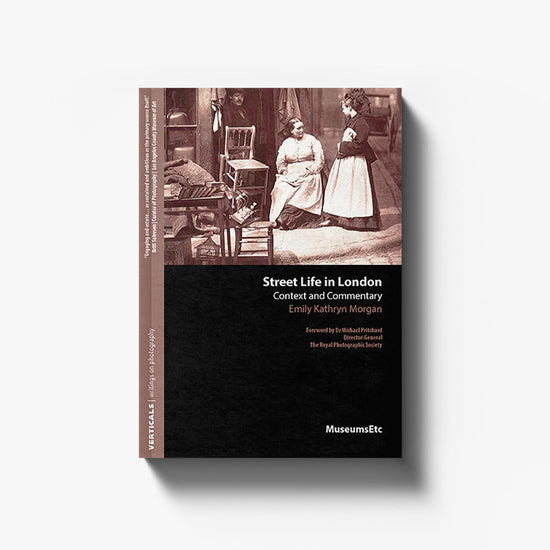
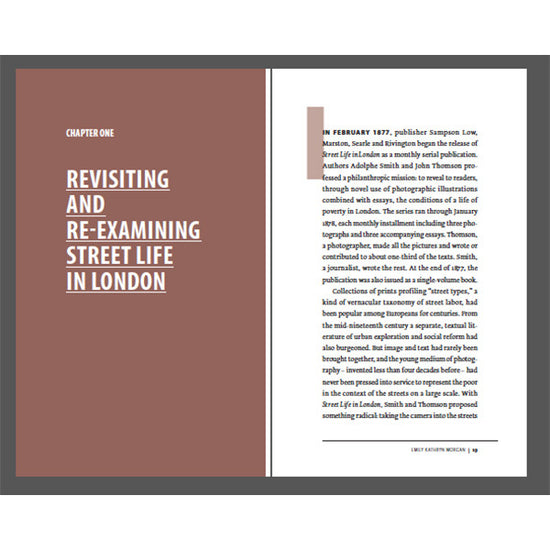

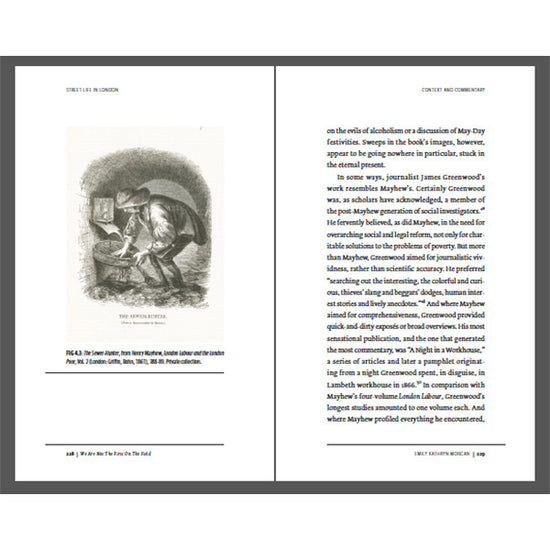

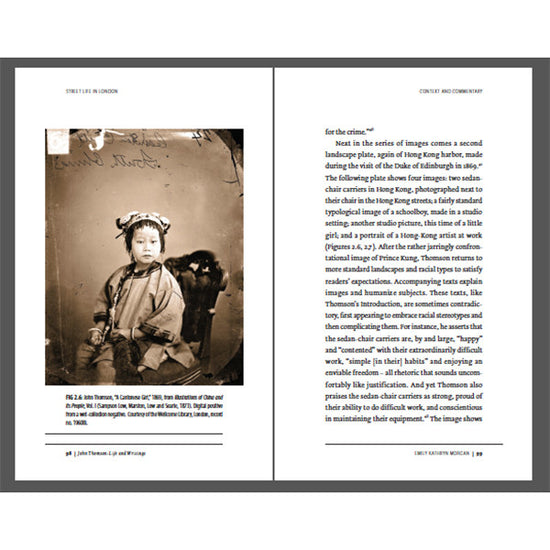
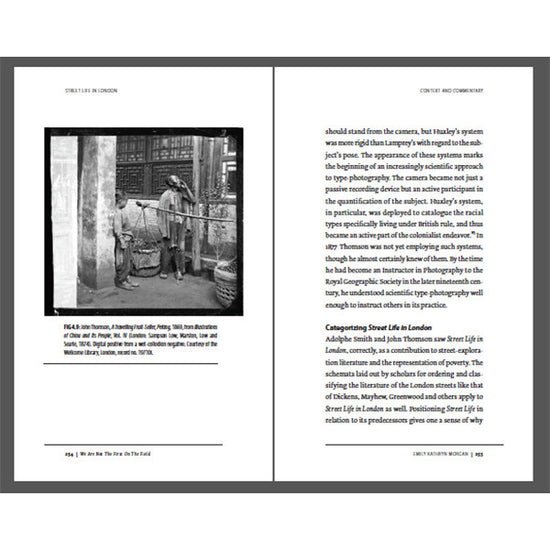
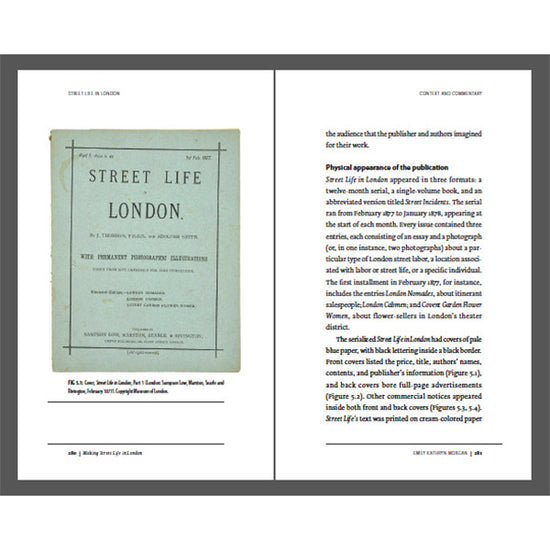
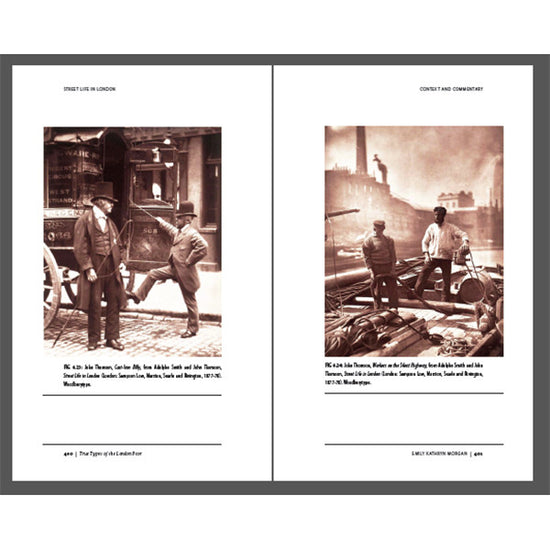
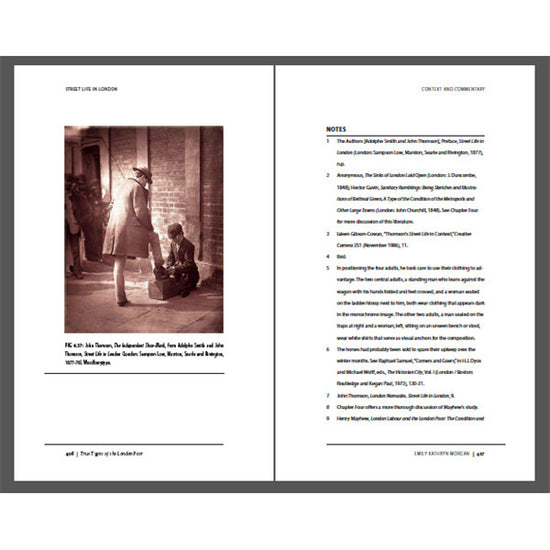
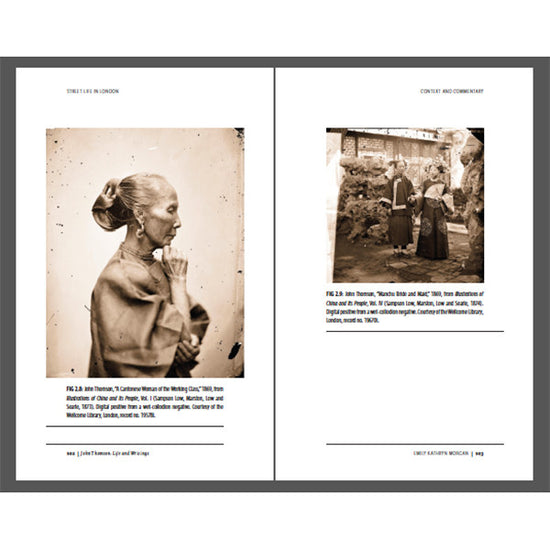
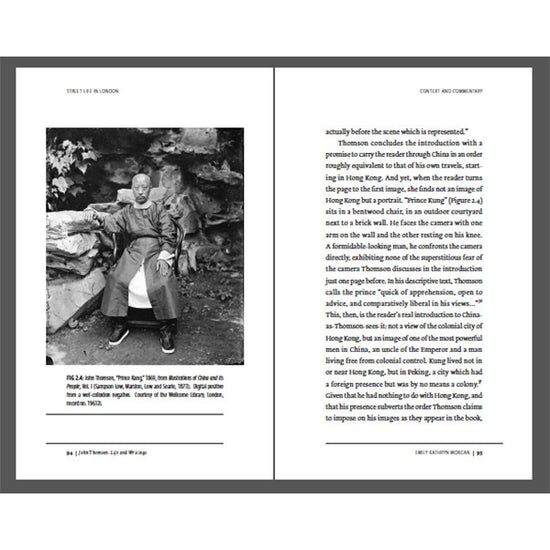
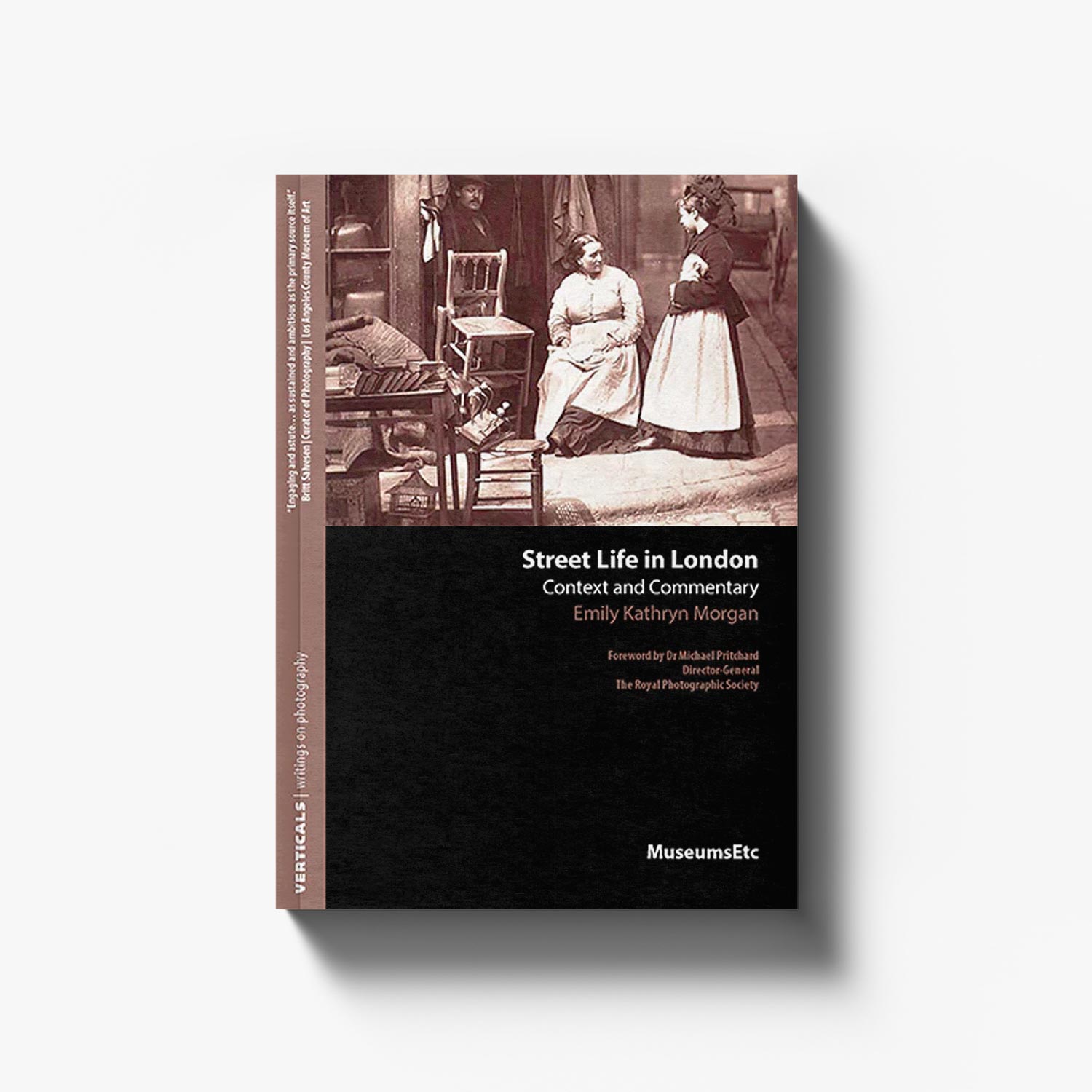
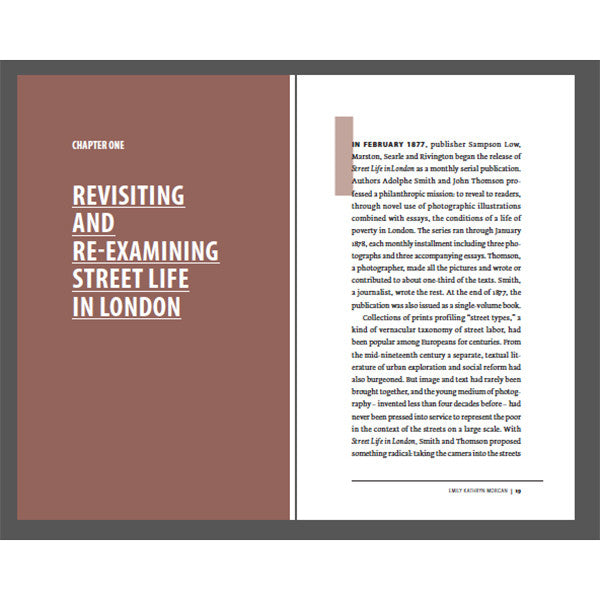
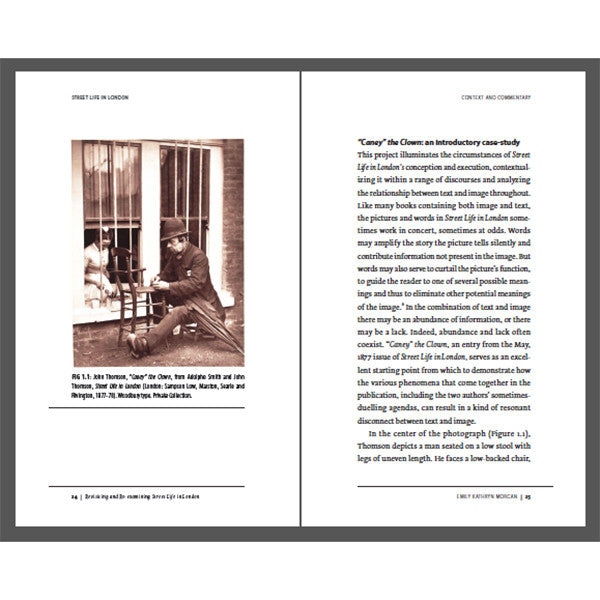

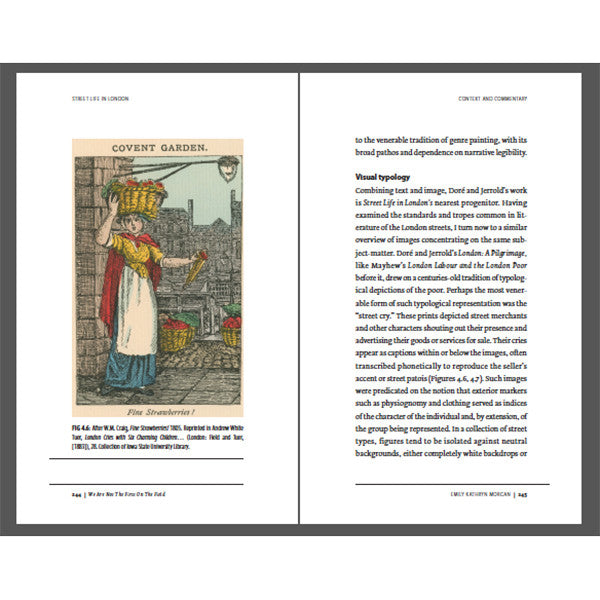
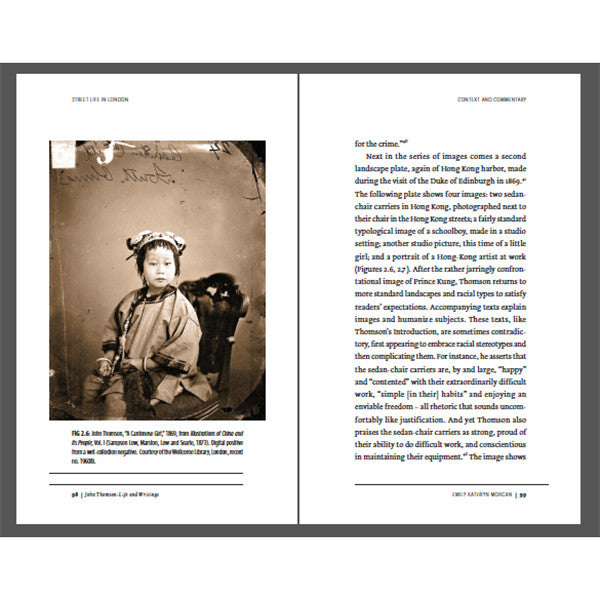
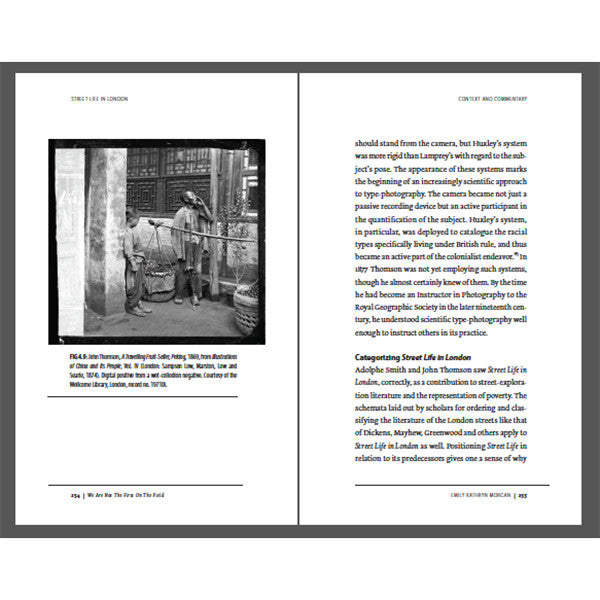
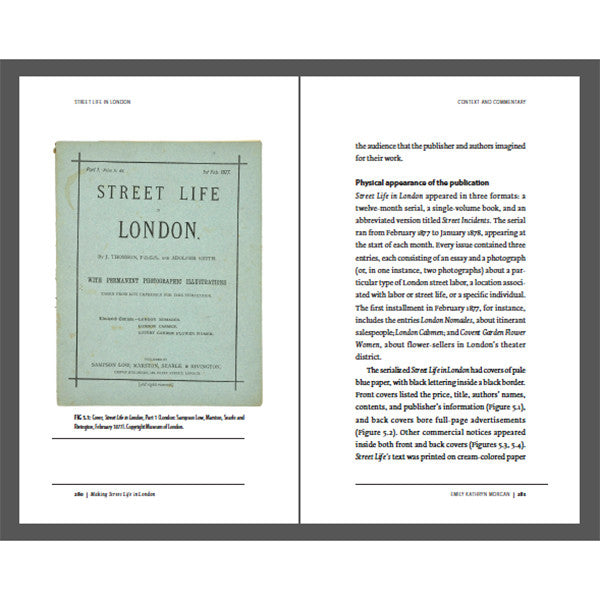

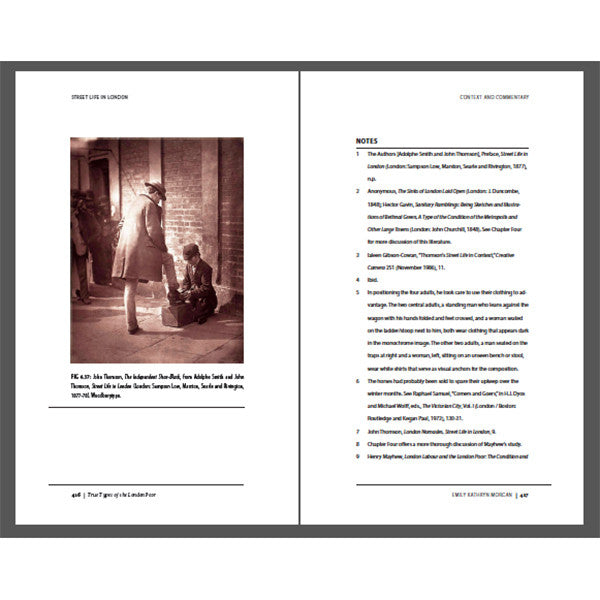
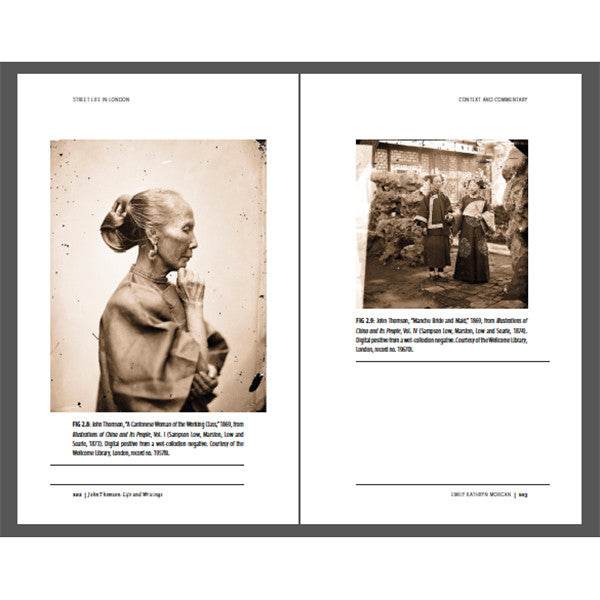
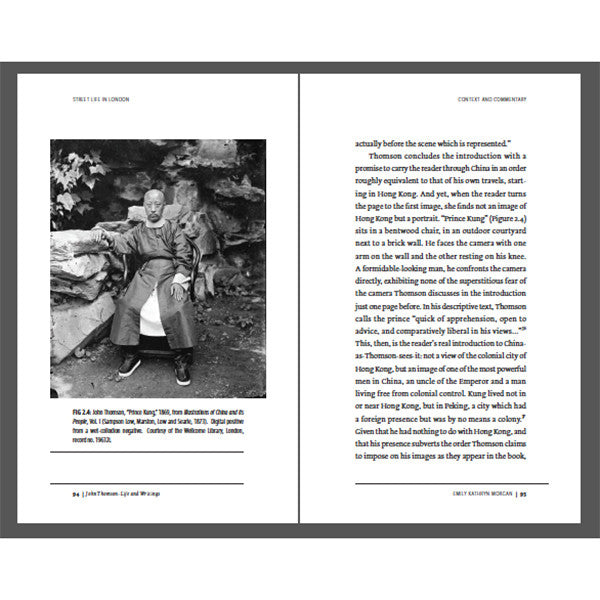
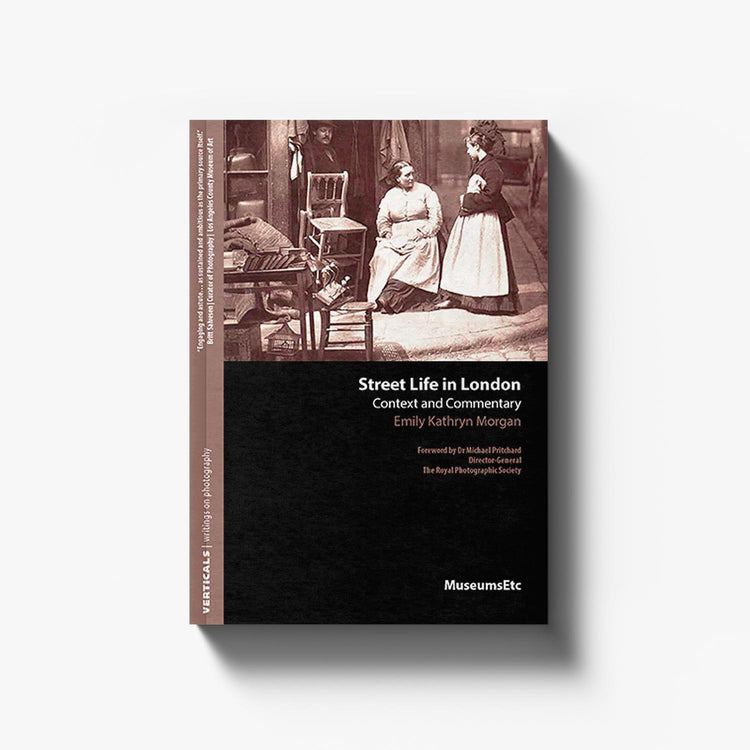
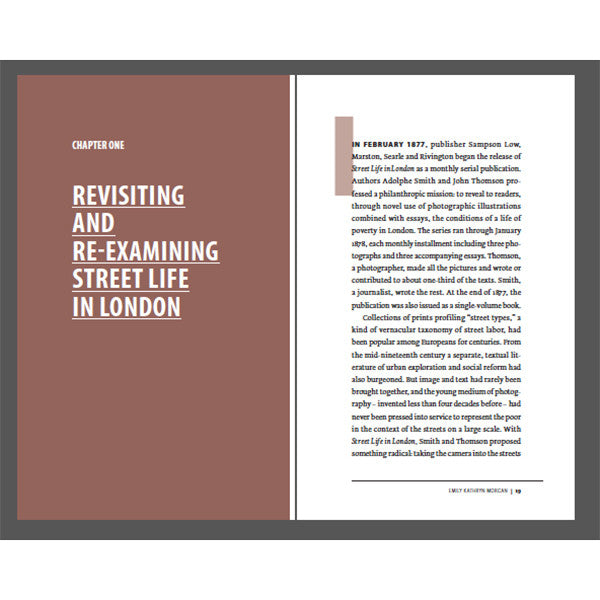
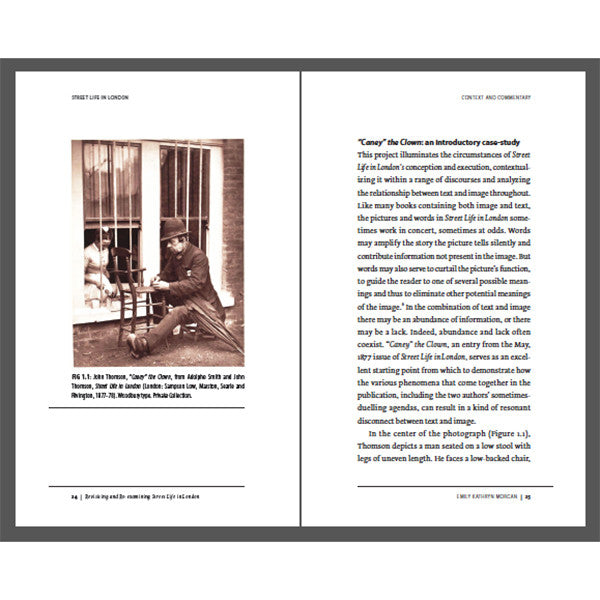

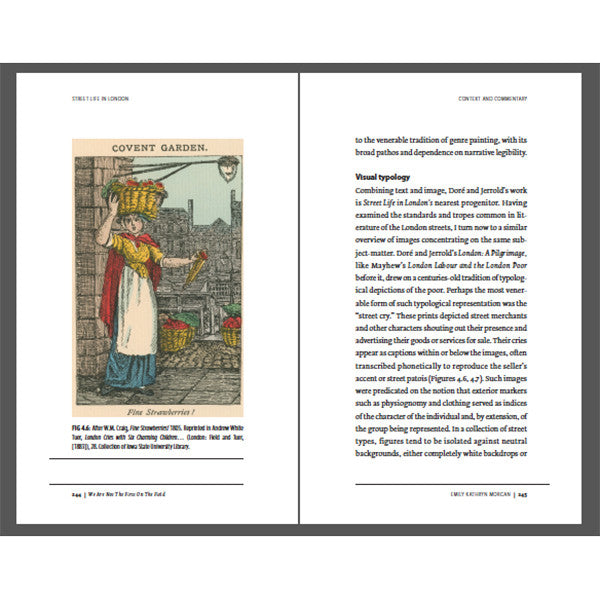
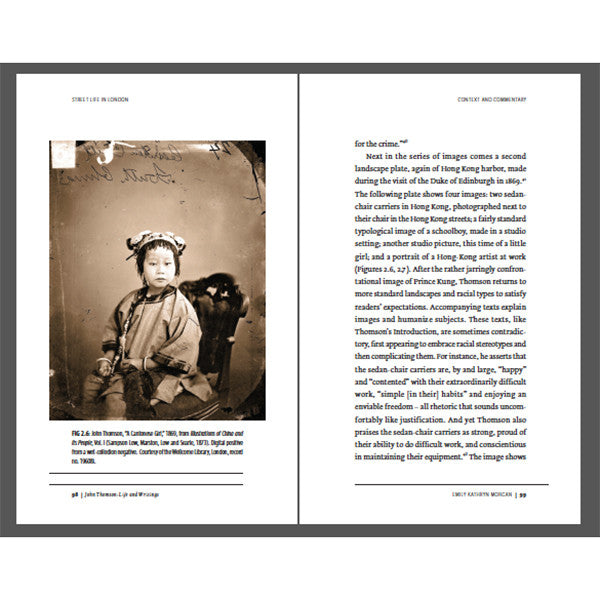
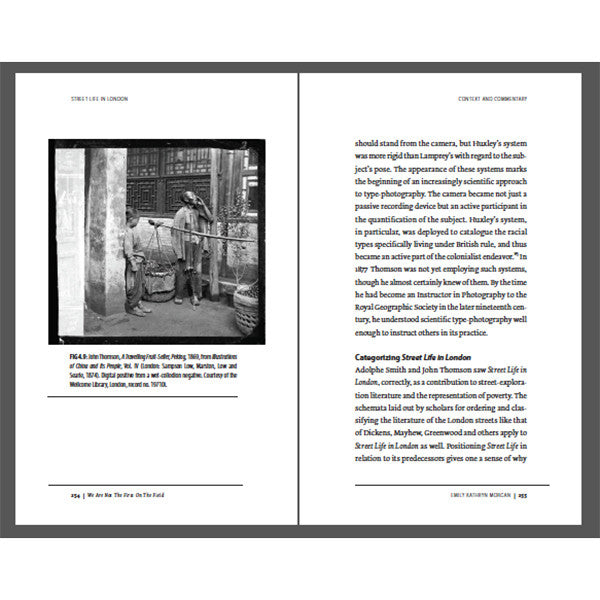
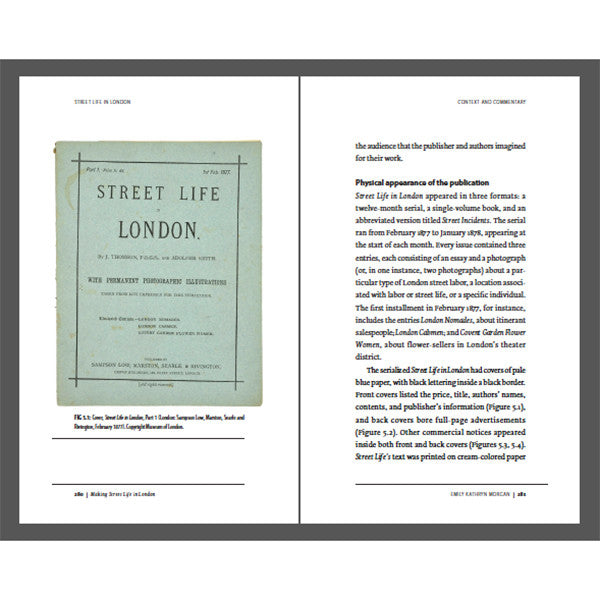

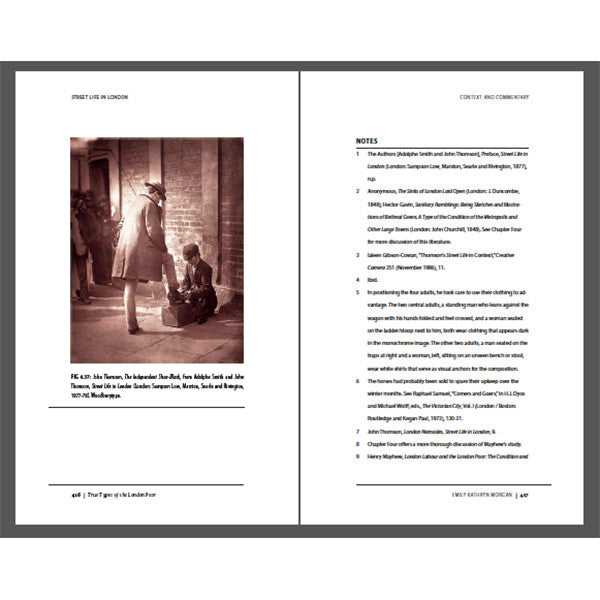
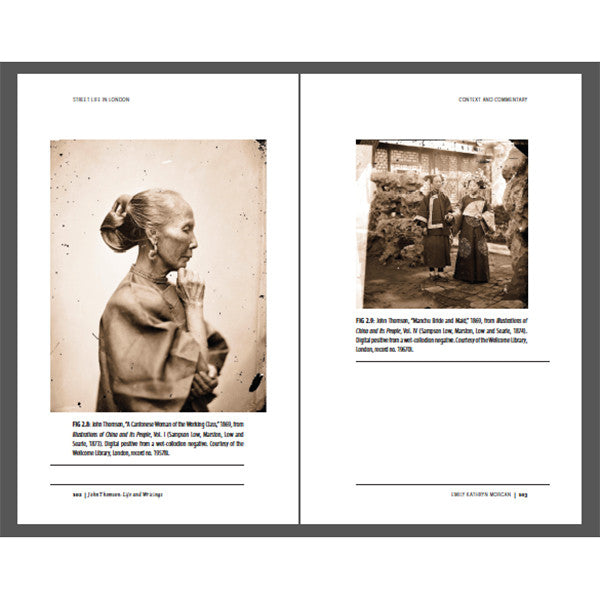

Description
Contents list
More
Less
Foreword
Dr Michael Pritchard, Director General, The Royal Photographic Society
Introduction
Revisiting and Re-examining Street Life In London
John Thomson: Life and Writings
Adolphe Smith: Life and Writings
We Are Not The First On The Field
Making Street Life In London
True Types of the London Poor
Street Life In London as Photo-Text
Conclusion
Bibliography
Author
More
Less
Emily Kathryn Morgan is Assistant Professor of Art and Visual Culture at Iowa State University. She received her MA and PhD in Art History from the University of Arizona, with a concentration on the history of photography. Emily’s research interests include photography and social exploration, photographic imagery of conflict and war, and photographic modernism, among other topics.
Reviews
More
Less
Britt Salvesen, Curator, Wallis Annenberg Department of Photography & the Department of Prints and Drawings, Los Angeles County Museum of Art:
Emily Kathryn Morgan’s analysis of Street Life in London is as sustained and ambitious as the primary source itself… Vividly evoking the culture of Victorian London, she establishes a detailed social and historical context for the publication's production and consumption, and brings many new facts and insights to bear. Her engaging, astute account not only reassesses the publication’s significance in photographic history, but also makes it available to numerous other fields of study: urban history, sociology, media studies, and more.
Dr Michael Pritchard, Director-General, The Royal Photographic Society:
John Thomson was a pioneering documentary and ethno-photographer and this book is an important contribution to reappraising his work and importance.
History Today:
Morgan’s fascinating 556-page tome is well researched, referencing critical primary, secondary and theoretical sources. The structure is presented so as to introduce the range of complex historical perspectives that influenced the work of Smith and Thomson. There is a broad and generous selection of pertinent plates interspersed throughout the writing... The publishers have been careful to match the tonalities and colours of the original images and photographs. - Janine Freeston in Vol 65: 4.
History of Photography:
Through this extremely well-written and timely analysis, Morgan provides the reader with a valuable context within which Thomson’s photographs and the accompanying essays, produced by both Smith and the photographer, can be situated within the wider context of socially concerned commentary on the daily struggle of those whose lives were lived out on London’s streets during the second half of the nineteenth century. The book succeeds admirably... Morgan’s extremely well researched and well written volume opens out discussion, focusing not only on the tensions between image and text, and the social and aesthetic problems of how poverty might be most effectively represented, but also raising questions regarding the means of production, the manner of circulation, and audience reception. - Simon Knowles in Vol 40: 2.
Nineteenth-Century Contexts:
This is a capacious, comprehensive volume, the latest in the series Verticals, studies in the history of photography. John Thomson, the prime fi gure of this account, is renowned in the annals of photography for his images of the Far East, taken between 1862 and 1872 on his journeys through China, Thailand, Vietnam, Taiwan, and Cambodia. But he is also known for the photographs of life in London he took on his return to England, reminders of the poverty, even amidst the national wealth, as he put it, that existed in his midst. Several of these images were included in the exhibition “The Golden Age of British Photography, 1839-1900,” seen first at the Victoria and Albert Museum in 1984; and a facsimile of the whole — if with the name Thomson misspelled Thompson — had been put out in 1969 by the publisher Benjamin Blom. In its subjects, as Thomson and Adolphe Smith his collaborator acknowledged, this compilation had precedents in the volumes of Henry Mayhew’s “London Labour and London Poor,” published ten years earlier, and also in the wide number of studies on these topics, sociological and typological and literary, that made visible the street characters frequently seen in our crowded thoroughfares, even in those glimpses, as he and Smith put it, caught here and there, at the angle of some dark alley, or in some squalid corner beyond the beat of the ordinary wayfarer.
But this publication was unusual, perhaps unique, in combining image and text. And it is on this particular aspect of the production that Morgan focuses, drawing for her more general comments on Roland Barthes’ s now standard account of the relation between texts and images, plus also the more recent studies of Thomson himself by Ialeen Gibson-Cowan, Jeff Rosen, Angela Vanhaelen, and Richard Ovenden. This is in large part a work of synthesis, yet there is also much here of fresh interest, not least the attention Morgan is able to give to Thomson’ s collaborator, Adolphe Smith, a prolific writer, a crusader for wide-ranging reforms, a supporter of women’ s rights, and a dedicated socialist, whose interests ranged from the Commune in Paris to the horrifying stockyards of Chicago which, in 1905, he visited with Upton Sinclair. Both he and Thomson are nice instances of the energy and determination — and the moral compass — of so many reformers then who responded, in their varying ways, to the horrors of the newly expanding urban landscapes of Victorian Britain.
The history of this publication, as Morgan shows, is complex. New installments appeared for subscribers every month from February 1877 to January 1878, each including three entries providing a text and one or two photographs, the texts including numerous statistics — as when Smith notes, commenting on a photograph of a London Cabman, that in the city there are 4142 Hansom Cabs and 4120 Clarence, or four wheel cabs — and then often more general commentaries, that, in this example, the Cabmen, no better abused a set of men in existence, as he put it, had organized themselves in 1874 and, a year later, this organization was recognized at the Trades’ Union Congress. The images were produced by the new Woodburytype process, patented in 1864, a semi-mechanical system, using gelatin in an intaglio mould, from which the final impressions could be run off directly onto stiff paper that resulted in images, at once warm in their tonal values — this is nicely shown in the sepia plates here — and hardly distinguishable from actual photographs. All this, and much else, is laid out clearly by Morgan; and then, when she comes to talk more generally about this publication, other wider issues are raised by this project. There is always the question about the real purpose of such photographs, these being, of course, the production not of the people captured in the images, but of middle-class photographers, asserting, if in ways they did not themselves recognize openly, the power of their own social authority. There are also, inevitably, questions about the images themselves and of what we can call their truthfulness, some being obviously cropped, others fitting perhaps too easily the conventional expectations of the types shown. Yet others — and here Morgan makes some very nice comments — in representing what she calls the flux and change of urban life, reveal the signs of life, in one instance with shadows of the crowd outside the frame, in another a child customer casually blocking the view of the display in an old clothes shop. And then also, as Morgan notes in her introduction, there is the account of the historiography of the images, the ways in which they were long neglected until recognized afresh in the 1950s in the writings of Beaumont Newhall and Helmut Gernsheim as part of the then newly valued art of photography.
All this, and much else, will be of interest to the readers of this journal. - David Cast, Eugenia Chase Guild Professor of the Humanities, Bryn Mawr College, Wales.
Stephen White, Author of John Thomson: A Window to the Orient:
Morgan delves into the book itself analyzing both text and images for complex meanings, relationships, and reflections of the times. Of particular interest is her survey of past material about John Thomson, her recap of his life, and the events that shaped him prior to undertaking the photographs for Street Life. [She] also explores in depth the life of the writer of most of the text, Adolphe Smith, who has remained an unknown persona [and whose] socialist focus and intense interest in social reform made him a natural partner.
Data
More
Less
Pages: 556
Colour illustrations: 75
Size: 203 x 127 mm
Date: 2014
Edition: £45 [eBook]
Description
This acclaimed book by Emily Kathryn Morgan (Assistant Professor of Art and Visual Culture at Iowa State University) is an in-depth examination of the groundbreaking 1877-78 publication Street Life in London, by journalist Adolphe Smith and photographer John Thomson. Street Life in London aimed to reveal, through the innovative use of photography and essays, the conditions of a life of poverty in London.
This book is the first-ever in-depth analysis of the genesis, development and context of Smith and Thomson’s innovative publication. Now regarded as a pioneering photo-text and a foundational work of socially conscious photography – “one of the most significant and far-reaching photobooks in the medium’s history” (The Photobook: A History) – Street Life in London did not achieve commercial success in its own time. In Street Life in London we see the start, but not the conclusion, of a conversation between text and image in the service of education, reportage and social justice.
Contents list
Foreword
Dr Michael Pritchard, Director General, The Royal Photographic Society
Introduction
Revisiting and Re-examining Street Life In London
John Thomson: Life and Writings
Adolphe Smith: Life and Writings
We Are Not The First On The Field
Making Street Life In London
True Types of the London Poor
Street Life In London as Photo-Text
Conclusion
Bibliography
Author
Emily Kathryn Morgan is Assistant Professor of Art and Visual Culture at Iowa State University. She received her MA and PhD in Art History from the University of Arizona, with a concentration on the history of photography. Emily’s research interests include photography and social exploration, photographic imagery of conflict and war, and photographic modernism, among other topics.
Reviews
Britt Salvesen, Curator, Wallis Annenberg Department of Photography & the Department of Prints and Drawings, Los Angeles County Museum of Art:
Emily Kathryn Morgan’s analysis of Street Life in London is as sustained and ambitious as the primary source itself… Vividly evoking the culture of Victorian London, she establishes a detailed social and historical context for the publication's production and consumption, and brings many new facts and insights to bear. Her engaging, astute account not only reassesses the publication’s significance in photographic history, but also makes it available to numerous other fields of study: urban history, sociology, media studies, and more.
Dr Michael Pritchard, Director-General, The Royal Photographic Society:
John Thomson was a pioneering documentary and ethno-photographer and this book is an important contribution to reappraising his work and importance.
History Today:
Morgan’s fascinating 556-page tome is well researched, referencing critical primary, secondary and theoretical sources. The structure is presented so as to introduce the range of complex historical perspectives that influenced the work of Smith and Thomson. There is a broad and generous selection of pertinent plates interspersed throughout the writing... The publishers have been careful to match the tonalities and colours of the original images and photographs. - Janine Freeston in Vol 65: 4.
History of Photography:
Through this extremely well-written and timely analysis, Morgan provides the reader with a valuable context within which Thomson’s photographs and the accompanying essays, produced by both Smith and the photographer, can be situated within the wider context of socially concerned commentary on the daily struggle of those whose lives were lived out on London’s streets during the second half of the nineteenth century. The book succeeds admirably... Morgan’s extremely well researched and well written volume opens out discussion, focusing not only on the tensions between image and text, and the social and aesthetic problems of how poverty might be most effectively represented, but also raising questions regarding the means of production, the manner of circulation, and audience reception. - Simon Knowles in Vol 40: 2.
Nineteenth-Century Contexts:
This is a capacious, comprehensive volume, the latest in the series Verticals, studies in the history of photography. John Thomson, the prime fi gure of this account, is renowned in the annals of photography for his images of the Far East, taken between 1862 and 1872 on his journeys through China, Thailand, Vietnam, Taiwan, and Cambodia. But he is also known for the photographs of life in London he took on his return to England, reminders of the poverty, even amidst the national wealth, as he put it, that existed in his midst. Several of these images were included in the exhibition “The Golden Age of British Photography, 1839-1900,” seen first at the Victoria and Albert Museum in 1984; and a facsimile of the whole — if with the name Thomson misspelled Thompson — had been put out in 1969 by the publisher Benjamin Blom. In its subjects, as Thomson and Adolphe Smith his collaborator acknowledged, this compilation had precedents in the volumes of Henry Mayhew’s “London Labour and London Poor,” published ten years earlier, and also in the wide number of studies on these topics, sociological and typological and literary, that made visible the street characters frequently seen in our crowded thoroughfares, even in those glimpses, as he and Smith put it, caught here and there, at the angle of some dark alley, or in some squalid corner beyond the beat of the ordinary wayfarer.
But this publication was unusual, perhaps unique, in combining image and text. And it is on this particular aspect of the production that Morgan focuses, drawing for her more general comments on Roland Barthes’ s now standard account of the relation between texts and images, plus also the more recent studies of Thomson himself by Ialeen Gibson-Cowan, Jeff Rosen, Angela Vanhaelen, and Richard Ovenden. This is in large part a work of synthesis, yet there is also much here of fresh interest, not least the attention Morgan is able to give to Thomson’ s collaborator, Adolphe Smith, a prolific writer, a crusader for wide-ranging reforms, a supporter of women’ s rights, and a dedicated socialist, whose interests ranged from the Commune in Paris to the horrifying stockyards of Chicago which, in 1905, he visited with Upton Sinclair. Both he and Thomson are nice instances of the energy and determination — and the moral compass — of so many reformers then who responded, in their varying ways, to the horrors of the newly expanding urban landscapes of Victorian Britain.
The history of this publication, as Morgan shows, is complex. New installments appeared for subscribers every month from February 1877 to January 1878, each including three entries providing a text and one or two photographs, the texts including numerous statistics — as when Smith notes, commenting on a photograph of a London Cabman, that in the city there are 4142 Hansom Cabs and 4120 Clarence, or four wheel cabs — and then often more general commentaries, that, in this example, the Cabmen, no better abused a set of men in existence, as he put it, had organized themselves in 1874 and, a year later, this organization was recognized at the Trades’ Union Congress. The images were produced by the new Woodburytype process, patented in 1864, a semi-mechanical system, using gelatin in an intaglio mould, from which the final impressions could be run off directly onto stiff paper that resulted in images, at once warm in their tonal values — this is nicely shown in the sepia plates here — and hardly distinguishable from actual photographs. All this, and much else, is laid out clearly by Morgan; and then, when she comes to talk more generally about this publication, other wider issues are raised by this project. There is always the question about the real purpose of such photographs, these being, of course, the production not of the people captured in the images, but of middle-class photographers, asserting, if in ways they did not themselves recognize openly, the power of their own social authority. There are also, inevitably, questions about the images themselves and of what we can call their truthfulness, some being obviously cropped, others fitting perhaps too easily the conventional expectations of the types shown. Yet others — and here Morgan makes some very nice comments — in representing what she calls the flux and change of urban life, reveal the signs of life, in one instance with shadows of the crowd outside the frame, in another a child customer casually blocking the view of the display in an old clothes shop. And then also, as Morgan notes in her introduction, there is the account of the historiography of the images, the ways in which they were long neglected until recognized afresh in the 1950s in the writings of Beaumont Newhall and Helmut Gernsheim as part of the then newly valued art of photography.
All this, and much else, will be of interest to the readers of this journal. - David Cast, Eugenia Chase Guild Professor of the Humanities, Bryn Mawr College, Wales.
Stephen White, Author of John Thomson: A Window to the Orient:
Morgan delves into the book itself analyzing both text and images for complex meanings, relationships, and reflections of the times. Of particular interest is her survey of past material about John Thomson, her recap of his life, and the events that shaped him prior to undertaking the photographs for Street Life. [She] also explores in depth the life of the writer of most of the text, Adolphe Smith, who has remained an unknown persona [and whose] socialist focus and intense interest in social reform made him a natural partner.
Data
Pages: 556
Colour illustrations: 75
Size: 203 x 127 mm
Date: 2014
Edition: £45 [eBook]
You May Also Like

